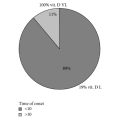Over a quarter of small businesses have seen an increase in customers using contactless payment methods, and the global contactless payments market is projected to rise to $18 billion by 2025. Traditional payment facilitators often use a disjointed service model, which requires hotels to manually process payments through a number of different vendors. This increases processing time and costs for what should be a simple task. As a result, many hotel owners consider guest payments to be an inevitable and fixed expense. This isn’t an inevitable consequence, though. This article will discuss how hotels can benefit from adopting a unified commerce payment system in the areas of streamlining operations, increasing conversions, increasing revenue, and providing a more streamlined and individualised experience for their guests.
Make Payments Stealthy to Boost Revenue and Closing Rates
There will always be some mental or physical annoyance for the customer when they have to shell out cash for a service. Customers’ shopping moods are disrupted when they are required to take out their cards, sign up for an account, or enter payment information. More friction in the payment process means more customers will forego a purchase in favour of an alternative. The Baymard Institute reports that just under 70% of online shoppers abandon their carts. Customers are more likely to abandon a cart if it is required to create an account, the checkout process is too long, or there is an error on the website. In general, the fewer clicks or taps a customer has to make to buy your product, the more likely they are to do so.
By incorporating technologies like express mobile check-in, contactless payments, and digital wallets, unified commerce payment services can greatly reduce payment friction. All of a hotel’s transaction information can be consolidated into one place with a unified commerce payment system, streamlining the delivery of a variety of cross-channel experiences and allowing for the collection of deeper customer insights. Nevertheless, hotels can expand even further than this. As soon as a guest gives a hotel permission to charge their credit card, the hotel can use Merchant Initiated Transactions (MITs) to process future payments in a single click. The use of MITs has been shown to increase the likelihood of a customer making a secondary purchase (such as dinner, a spa service, or a round of golf) and facilitate the booking of subsequent visits from the same customer. By allowing the hotel to charge a guest for a room even if they don’t show up, MITs can even mitigate the negative effects of no-shows.
The use of tokenization enables hotels to store encrypted payment data within the PMS, paving the way for “invisible” payments to be processed invisibly in the background. For instance, Amazon has recently tested “Just Walk Out” technology at two Whole Foods stores. Customers’ purchases were monitored by a system of sensors and cameras, and “Just Walk Out” allowed them to leave the store without ever interacting with a human cashier or a self-service checkout machine. The experiment is over, but the technology could be implemented in the hotel’s restaurants, shops, or even guest rooms.
Using a single, centralised identifier for each guest, payment tokenization makes it possible to track and analyse their preferences and spending habits over the course of their stay, which in turn increases the lifetime value of each customer. Information like this can be fed into customer relationship management and loyalty programmes for the purpose of creating targeted promotions and exclusive benefits for loyal customers. By linking a customer’s preferred payment method with the retailer’s loyalty app, payment-linking technology simplifies loyalty-based purchases. Customers can earn loyalty benefits through payment linking without providing any additional information or altering their typical purchasing behaviour. The majority of customers (81%) favour having their loyalty programmes linked automatically to their payment cards, and a sizeable minority (63% of customers) say they are more likely to shop at a store that offers such a programme. A seamless, background-running programme is more likely to be used by customers, which in turn allows businesses to create more nuanced and robust profiles of their customer segments and gain valuable insights that can increase revenue.
Payments to your company shouldn’t be difficult to receive.

Payment collection is the bedrock of any enterprise. The obvious point is that hotels shouldn’t make it harder for themselves to get paid. Unfortunately, the conventional methods of facilitating hotel payments impose substantial and unwarranted burdens on hotels. When hotels have to deal with separate payment processing, acquiring, scheme, and interchange companies, the resulting billing system is complicated, unclear, and costly for all parties involved. Hotels can’t predict their processing fees because they vary by provider, merchant risk, country regulations, and type of transaction (domestic vs. international). …and usually spend a lot more than they bargained for.
However, there may be overhead expenses associated with running a decentralised payment processing system. Processing payments by hand is labor-intensive, prone to mistakes, and can slow down an otherwise seamless digital guest experience. When dealing with a large number of vendors, you’re dealing with a large number of uncoordinated, self-interested customer service departments. When hotels have to coordinate between different customer support teams, it can be difficult to resolve chargebacks, disputes, and other payment issues for guests.
The answer is for hotels to work with a single provider who can handle all aspects of payment processing and still mesh well with their other systems. In addition to streamlining the payment process, a unified commerce payment system consolidates hotel billing into a single statement and provides guests with a single point of contact for any inquiries. By automating payment processes, a unified payment system helps hotels save money while freeing up employees to focus on guest experiences and revenue growth.
Also Read : There Is A Stronger Link Between Your Skin And Heart Than You May Realize
Meeting customers where they are is the first step in creating a seamless guest experience.
The first step in providing outstanding service is accommodating guests by accommodating their payment preferences. Many hotels are moving towards a fully digital, mobile-first guest experience by letting guests do everything from their smartphones, including booking, checking in, paying for extras like Wi-Fi and breakfast, and even checking out. A hotel’s ancillary revenue can be increased and the guest experience can be made more tailored to each individual by designing the entire stay around the guest’s mobile device. However, without a unified commerce payment system, none of these benefits can be realised. When arriving at the hotel, it makes no sense to have a guest check in via their phone while driving from the airport, only to have them confirm their credit card details with a front desk agent upon arrival.
Guests should be able to pay for their hotel stays in whatever way is most convenient for them, be it via a smartphone app, a guest-facing kiosk, or in person. Hotels can increase their conversion rate at key moments in the guest journey by integrating payment links into pre-stay inspiration and planning materials such as emails, texts, and QR codes.
Hotel guests should be able to pay with any method they prefer, including cash, credit cards, debit cards, and even “tap-to-pay” smartphones that use NFC technology. In addition, by 2025, mobile wallets will account for the vast majority of e-commerce transaction volume, according to a recent study by McKinsey. Also on the rise is the concept of “Buy Now, Pay Later” (BNPL) payments, with 68% of Millennials and Gen Zers saying they would be more likely to take a trip if they could spread out the cost of their plane ticket. If hotels ignore this rapidly expanding customer base, they may go out of business. If they don’t accept the methods of payment that their clientele prefer, they will lose business.
The function of facilitating payments should be expanded beyond a mere expense.
In the past, hotels have seen payment facilitation as little more than a commodity service, a necessary evil they couldn’t do without. However, payments can become an integral part of a hotel’s growth and guest engagement strategy with the help of the right technology. With the help of a unified commerce payment facilitator that works across all stages of the hotel’s operations, hotels can improve the guest experience by lowering the barrier to payment and increasing the number of guests who actually make a reservation, pay for an upgrade, or take advantage of the hotel’s other perks. In the future, payments will fade into the background, becoming an integral part of a uniquely tailored and monetisable experience for each individual visitor.








Leave a Reply